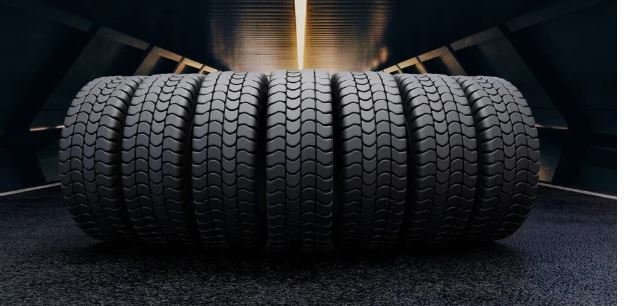In the event that you reside in an area that experiences snowfall or ice during the winter, it is imperative to remain vigilant of the road conditions and modify your driving accordingly. Driving more slowly, braking more easily, and keeping a greater distance between vehicles are all ways to stay safe, but perhaps most important is installing winter or “snow” tires. Winter tires
WHAT ARE WINTER TIRES?
Winter tires are specially designed to meet the challenges of driving during the most dangerous months of the year. From their tread pattern to the chemical compounds in the tread rubber, they are specially designed to provide better grip and control in winter conditions.
THE RUBBER
When a tire becomes stiff, it cannot provide the optimal grip you need to accelerate and stop.
THE WALK PATTERN
The tread pattern of winter tires is very different from that of all-season and summer tires. They have a deeper pattern depth with larger slits and sipes. Sills are small holes in the tire that act as biting edges on ice. Together, these unique tread elements allow the tire to dig deep into the snow, grip more on ice and ultimately provide greater control.
Many people call winter tires “snow tires,” but it’s important to note that “snow tires” aren’t just for when it’s snowing outside. Winter tires are simply the best when it comes to maintaining grip, accelerating, stopping and cornering in ice, snow and muddy conditions.
These features ensure that winter tires maintain grip even on unpredictable winter roads. The softer compound helps the tire maintain grip on an otherwise slippery road, the deeper tread pattern helps penetrate deeper into the snow, while unique tread design helps channel water and slush under the tire. Ultimately, winter tires make your car less likely to skid than all-season tires – and they can also help you accelerate and stop faster.
WHY DO I NEED FOUR SNOW TIRES?
Whether your vehicle is front or rear wheel drive, winter tires are best for all wheel positions. Although some drivers doubt the need to replace all four tires, there are good reasons why tire and car manufacturers recommend using a full set of winter tires.
First of all, installing two units means you lose some of the grip, braking and cornering benefits that a full set provides. Regardless of the type of vehicle you drive, never install two winter tires on the front axle without also installing them on the rear axle. Installing winter tires only on the front wheels increases the risk of the rear tire losing grip when braking or cornering on winter roads. This is because the rear wheels have less traction than the front wheels, which can cause the rear wheel to skid.
But what about installing winter tires on the rear wheels, especially if your vehicle is rear-wheel drive? Shouldn’t that be enough?
Remember that on a rear-wheel drive vehicle, the front wheels steer and the rear wheels provide the power. So if your rear tires are gripping the road but the front tires are not, it will be more difficult to steer the vehicle in the desired direction on winter roads.

Change to winter tires
If you drive in extreme cold, snow and ice, installing a full set of winter tires is clearly a good option. But how to mount them? The answer to this question depends on where you live and when the winter weather arrives. Here’s a great primer on when and how to install winter tires:
Install winter tires before the weather breaks
You should definitely have winter tire installed before the winter weather arrives. A good rule of thumb is: If you can consistently see your breath, it’s time to install winter tires.
FIT WINTER TIRES ON YOUR OWN WHEELS
Do you want to shorten the waiting time in the car workshop? Have a technician install your winter tire on another set of wheels that meet the vehicle’s specifications (don’t forget the sensors for a tire pressure monitoring system if your vehicle is equipped with one). Then just replace the tire/wheel combinations for the season – it’s much easier than having to fit and remove tires every year!
Don’t wait too long to remove it
Summer and all-season tires are made to work in the summer, while winter tire are made to function best in the winter. It is not intended for winters tire to be driven in the warmer months, and doing so can accelerate tire deterioration.
Regardless of the type of tire you drive, you should be aware of winter road conditions and the possibility that you may encounter surfaces that are more slippery than others. It’s always best to slow down and give yourself more time to get where you want to go. The seasonal fitting of winters tire also increases road safety. If you deal with snow, ice or mud every year, a complete set of winter tire is not just a matter of convenience; It is a precaution that can prevent an accident.
Traffic conditions in winter
Winter tires work on a variety of surfaces including asphalt (wet or dry), mud, ice or snow. The snow strength due to compaction depends on the properties of the snow, which depend on temperature and water content. Road interface. Fresh snow and powder snow have a density of 0.1 to 0.3 g/cm3 (6 to 20 lb/cu ft). Compacted snow can have a density of 0.45 to 0.75 g/cm3 (28 to 47 lb/cu ft).[5]
Roads covered in snow or ice provide less braking and cornering friction compared to dry conditions. In particular, the friction properties of snow on the road depend on the temperature. In temperatures below -7°C (20°F), snow crystals are harder and create more friction when a tire drives over them than in warmer conditions with snow or ice on the road surface. However, as temperatures rise above -2°C (28°F), the presence of free water increasingly lubricates the snow or ice and reduces tire friction. Hydrophilic rubber compounds help create friction in the presence of water or ice.[6]
WINTER DRIVING TIPS | CHECK THE TIRE PRESSURE
Familiarize yourself with your tire pressure gauge; You will need it during the winter months. Find out why from a professional at the Bridgestone Winter Driving School. read more

